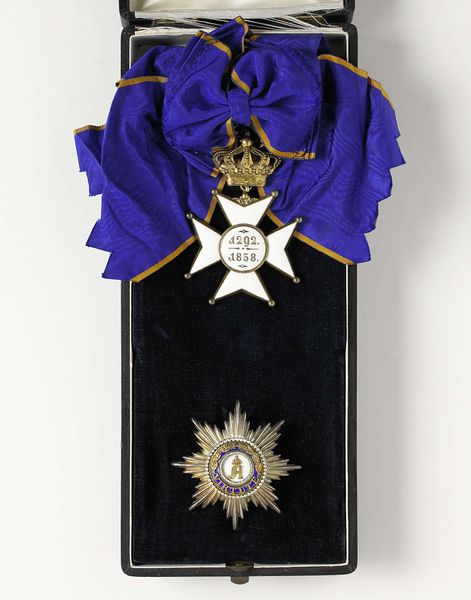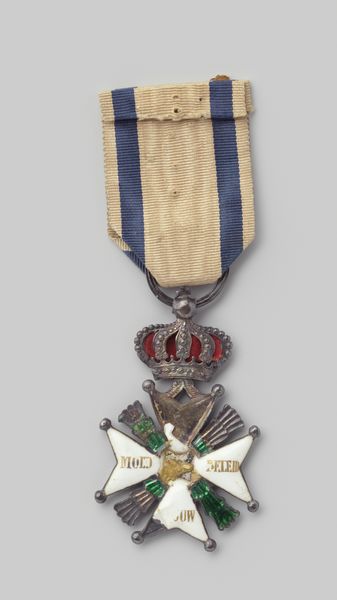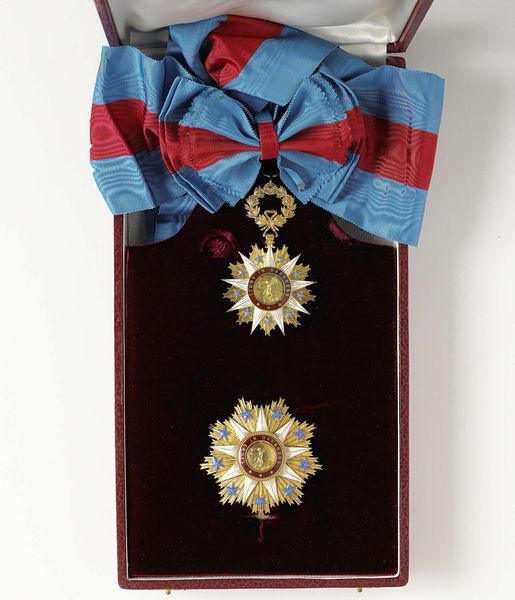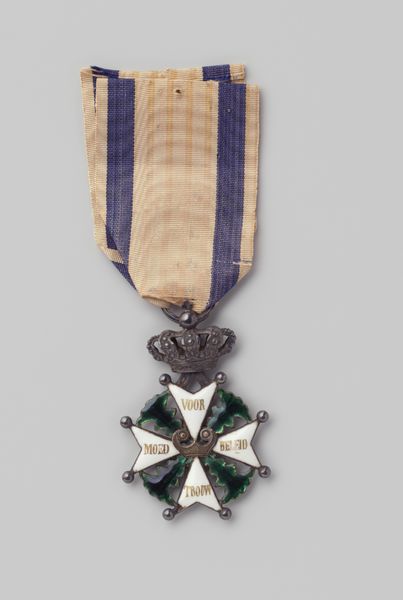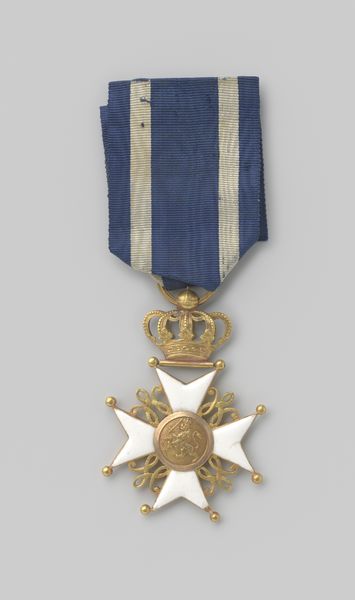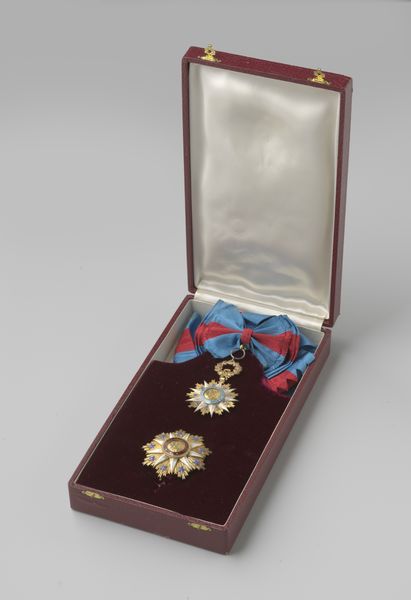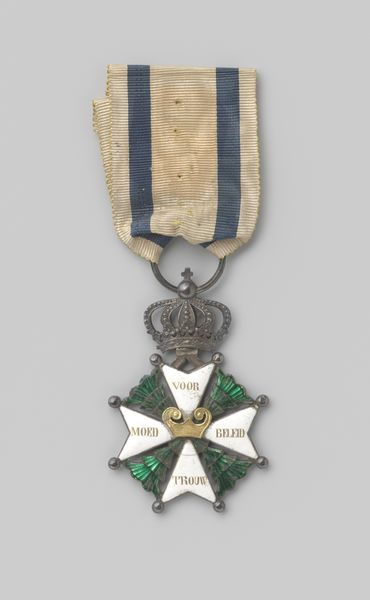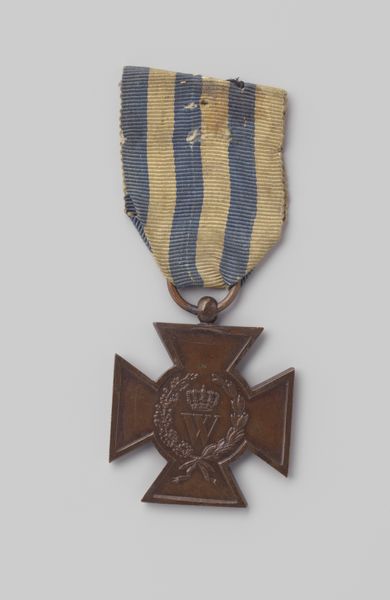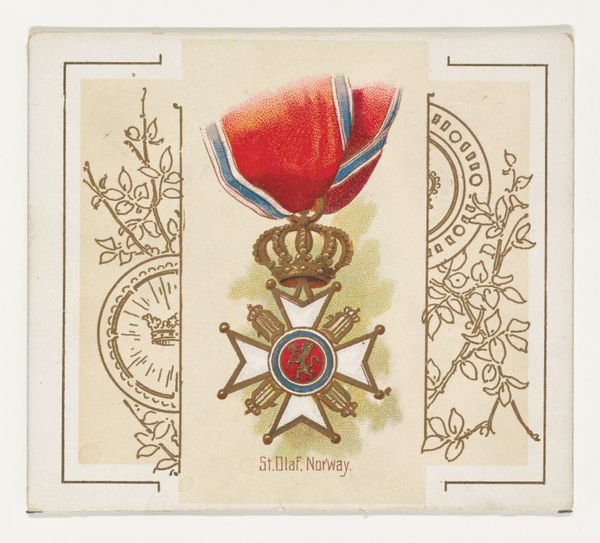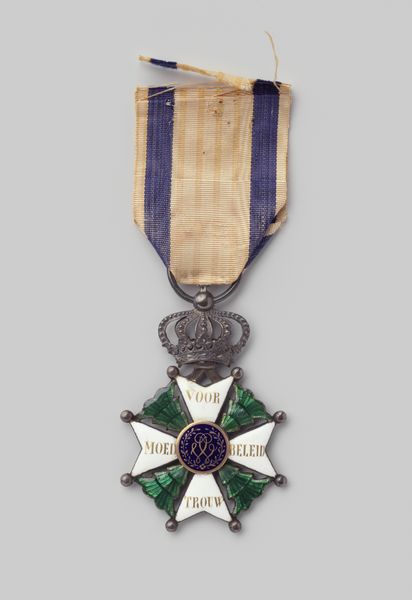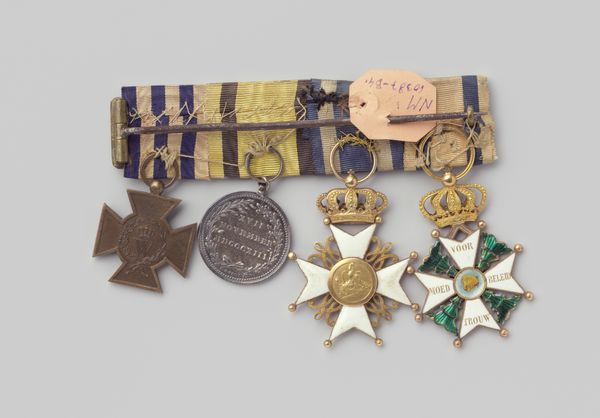
Griekse orde (Orde van George I), ontvangen door Willem Drees before 1954
0:00
0:00
#
decorative-art
#
decorative art
Dimensions: diameter 8.5 cm, width 4.8 cm, length 9.5 cm, width 10.2 cm, length 82 cm, width 15 cm, height 6 cm, width 13 cm, depth 28.8 cm
Copyright: Rijks Museum: Open Domain
Curator: This striking piece is the Greek Order, specifically the Order of George I, awarded to Willem Drees at some point before 1954. It's an example of decorative art housed here at the Rijksmuseum. Editor: My initial reaction is how formal and hierarchical it feels. There is such carefully designed pomp and circumstance literally boxed up! The pristine velvet lining accentuates the bright metals. Curator: Indeed. Decorations like these operated within very specific socio-political contexts. Examining this Order of George I awarded to Drees gives us insight into international relations, power dynamics, and the projection of national image in that era. We must consider what message it was intended to send by both Greece and the Netherlands. Editor: Right, and who receives these honours? Drees, a Prime Minister celebrated for building the Dutch welfare state, receiving an honor from a Greek monarchy feels like a collision of different socio-political projects, doesn't it? Are these rewards endorsements of aligned ideologies or strategic alliances? It would be interesting to explore who else was given this order. Curator: Absolutely, and further exploration could uncover exactly why it was bestowed on Drees. Also, you cannot underestimate the visual symbolism present; it speaks volumes about established hierarchies and power structures in early 20th century Europe. Crowns, crosses... it's a deliberate invocation of tradition and authority. Editor: That symbolism, though…it's almost theatrical in its display of national identity and perceived 'worthiness'. Thinking about it now, the rich crimson ribbon feels like an accentuation of this 'official' history—making certain narratives very visible while shadowing others. It serves as an enduring and aestheticized memory that reinforces certain power relations. Curator: Precisely, its presence here allows us to unpack those complexities and, through its continued exhibition, critically evaluate the values and power structures these decorations sought to perpetuate. Editor: Thinking about it now, I realize how important it is to consider such items through a critical lens that accounts for historical narratives, because the real significance goes far beyond pure aesthetics and shines light on issues like identity, class, and political intention.
Comments
No comments
Be the first to comment and join the conversation on the ultimate creative platform.
